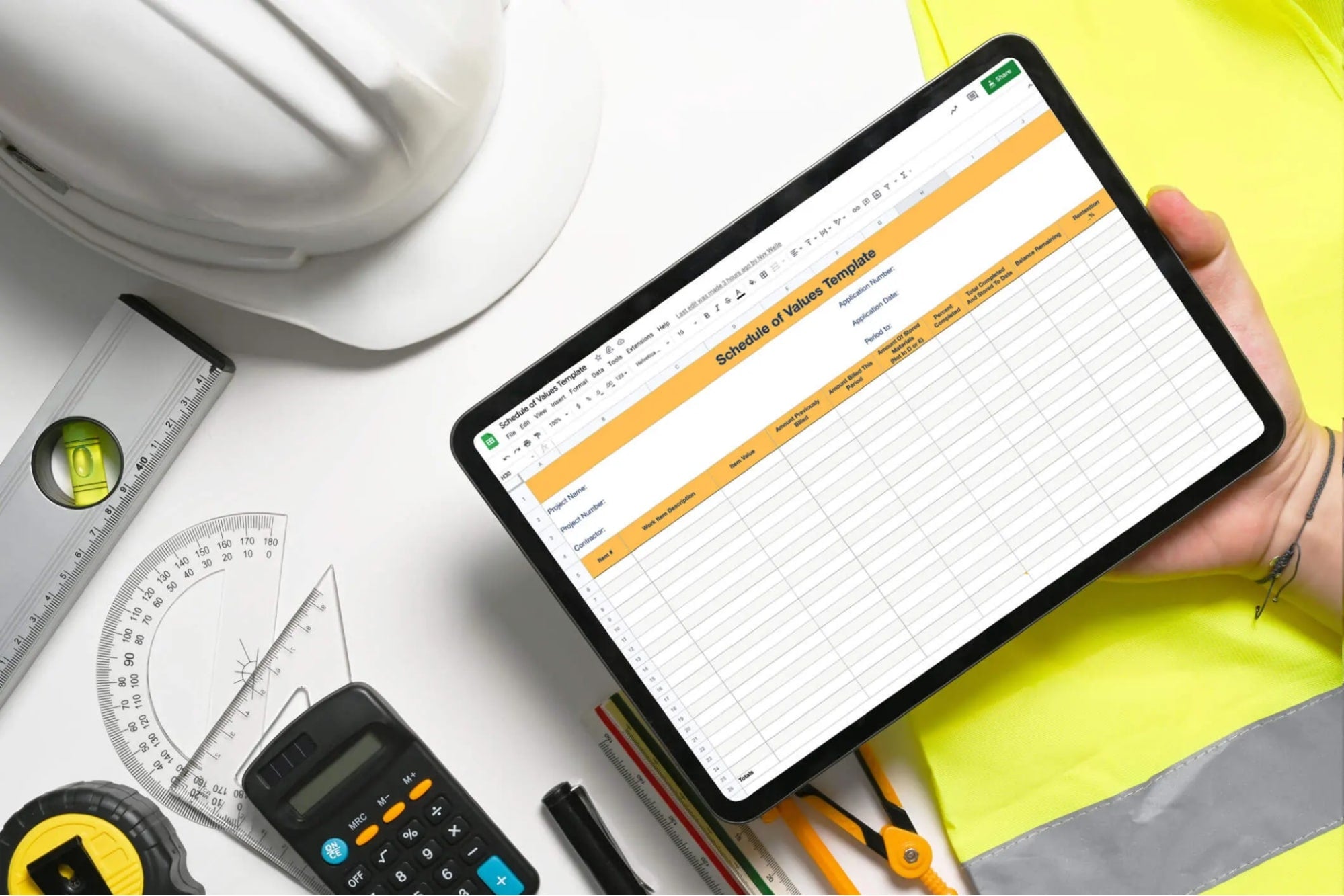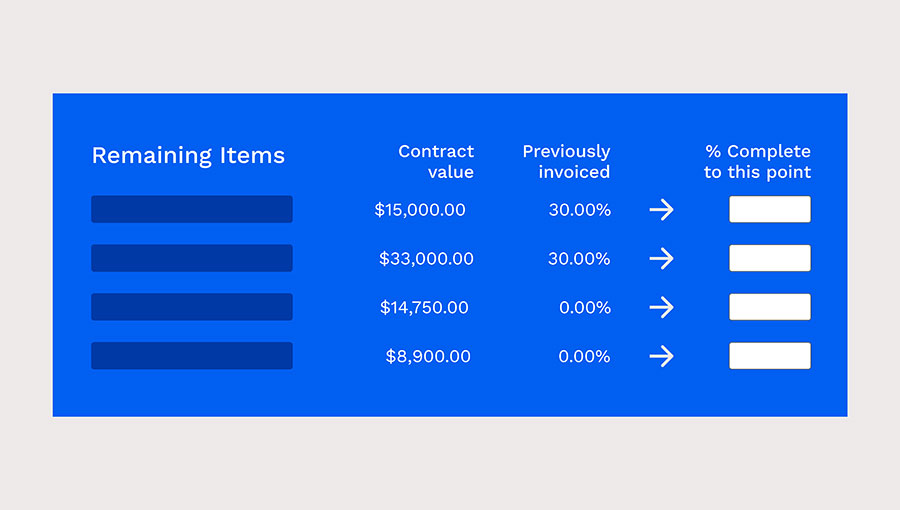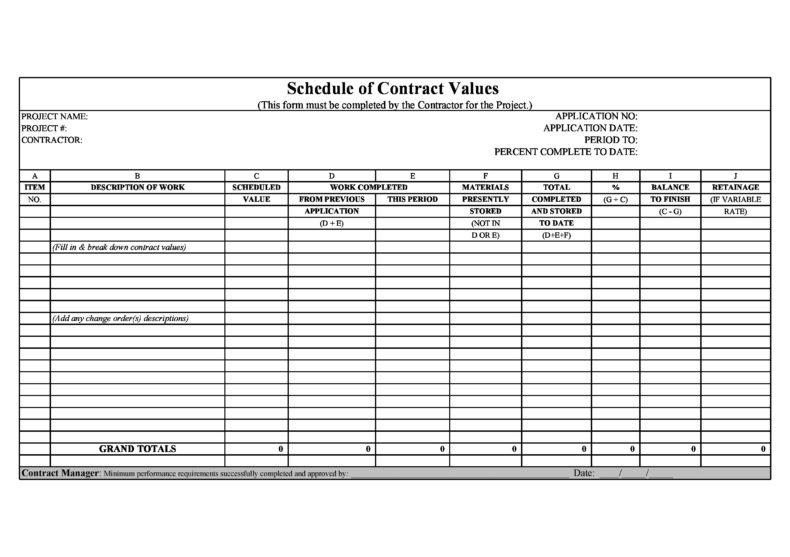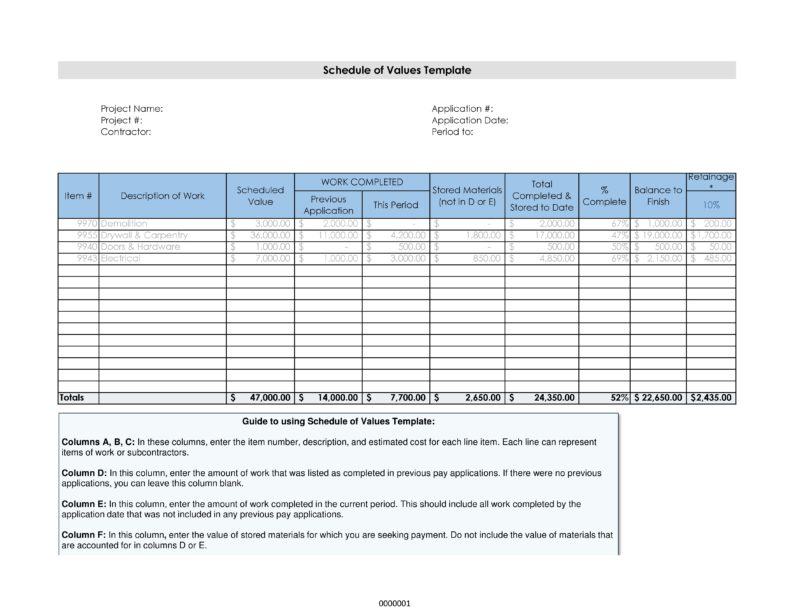
What Is a Schedule of Values and How to Easily Create One

When dealing with a new project, whether a construction contract or any other kind of business, the project owner must worry about tons of different values. Every detail must be well managed, from progress payments to the fixed price of each item.
For helping in this task, there is a tool called schedule of values that can give you a detailed spreadsheet of all values regarding the project. Everything is tracked by this document, from contract price to a detailed schedule of payments.
In this article, we will show you how to create the perfect schedule of values template for your business. This way, you will have a more optimized document to track all aspects of your project and also avoid problems with the cash flow or any other aspect.
What Is a Schedule of Values and How to Easily Create One
What Is a Schedule of Values
The schedule of values is a document containing the entire contract sum regarding values and payment application management. The schedule of values form will provide all the details needed as the project progresses, like the current billing period and the approved budget for the construction project.
The form also shows the entire project on paper, following it step by step. It can be used by project owners, key stakeholders, or any other person involved in the construction project.
It is an essential part of any project, whether large-scale commercial projects or small constructions. The base of your schedule of values will be the same, and the only detail that will change is the contract price and the items listed.
Why Is the Schedule of Values Template Important
Along with helping with the cash flow, there are many reasons why the schedule of values can be a game changer for project owners from all construction businesses. One of the main benefits is that the schedule of values allows people to see the percentage of each item’s completion.
This makes the progress tracking way more optimized for all the parties involved. As for the cash flow, the schedule of values helps when running on tight value margins and short time.
The project manager can use the SoV to evaluate the work performance and choose to release the payment for it or not. This will enable the parties to receive payment in a timely manner and have enough cash flow to complete the project.
When to Use a Schedule of Values
Although the SoV document can be a game changer for almost every part of a construction project, there are proper situations to use it. Be sure to analyze them carefully to guarantee that it will be correctly used.
As previously mentioned, the schedule of values can be used in any project, regardless of its size and budget. But this document is indispensable for more extensive and complex projects, with more expressive cash involved and more items to track.
The SoV is usually used in projects with a guaranteed maximum price contract or a fixed price. The reason for that is these situations usually demand more project application management.
How to Create a Schedule of Values Template

Now that you know what a schedule of values is and why it is essential, it’s time to start creating your own template. Follow each step carefully to guarantee the best results out of it:
List of Items
The first thing you will add to your SoV template is the list of all the items involved in the project. You don’t need to use a name. The items are usually listed with a specific project number.
It is highly recommended that you follow a timeline when listing these items. Start with the project's first steps and leave the final stage items for the end. This way, your document will look way more optimized for the project managers reading it.
Description of the Items
After listing the items involved in the project, list a heading and basic information about each of them. It can be a title and a short description of the process.
Describing what will be done makes it easier for the stakeholders to understand the key steps of your project and what is needed to complete them. Moreover, your document will look way more organized.
Total Cost of Each Item
After filling in the description field of the items, you must write down the estimated cost for each work item. The person responsible for the project management must know the cost of each part of the project.
Not only that but doing this will avoid payment discrepancies when comparing the estimated value and the payment final balance. Guaranteeing the correct price for each step and good cost tracking are vital to all construction projects.
What You Have Been Paid
In almost every construction job, the total contract value is not paid at once, so it is important to note how much you have already been paid to manage the next steps better. From problems with prompt payment laws to project delays, having the wrong value listed can cause many problems.
Percentage of Work Completed
Another indispensable item for your schedule of values template is the percentage of completion for each item. This item is vital to calculate the project’s duration and oversee progress regarding each step.
It can also be great to compare the percentage of work completed with the due date. This will help the project owner to manage time better and avoid project delays.
Current Billing Period Cost
If you want your project to run without cash flow issues or any kind of problem, you must also take note of the cost of the billing period. It must be analyzed every month or week to anticipate any problems or issues along the way.
This way, you can plan any budget relocation and get an approved budget transfer process in an emergency. These problems can happen in any step and part of the project, from the scheduled value construction to the payment of an employee.
Remaining Cost
Next, your schedule of values must have a field to estimate costs for the rest of the project. After deducting the billing costs and the completed tasks, you will stipulate how much it will cost to complete the remaining parts.
Retainage
The last part of the schedule of values is to list the retainage cost for the project. The value usually is around 5% and 10% of the contract amount.
The retainage cost is a part of the total amount retained by who is contracting. This value will be given to the construction company once the project is completed. You must plan your expenses considering that you will only receive this value after completing the project.
Where to Create a Schedule of Values Template
When it comes to the creation of a schedule of values, there are tons of different tools that you can use, each one with its own features. Among all the available options, we highly recommend using Microsoft Excel.
The software has one of the best tool sets available, with tons of features that allow you to create the perfect template for your project. Moreover, Excel is an industry standard, dismissing the need to pay for specialized software for each task you do.
If you don’t have a Microsoft Office activation key, you can buy one at RoyalCDKeys for a considerably lower price. This way, you will have access to all the tools available and save money that can be used in other parts of the project.
Ready to Use Template
If you don’t want to create your schedule of values spreadsheet from scratch, there is no problem. There are tons of templates available for you to choose from.
Be sure to select a template that fits your needs and expectations. Here are some templates for you to use:
Template #1
Simple schedule of values form. Includes fields for early project activities and can be used for any kind of construction.

Template #2
Blank schedule of values. Highly customizable template with fields that can be used for any kind of data tracking.

Template #3
Template with a column guideline. Indicated for managers that need specific categories in a template.

Conclusion on Schedule of Values
The schedule of values is undeniably one of the essential tools in the construction industry for project owners seeking better management of their projects. For the template to work, it must be carefully thought out, featuring all the necessary information.
Be sure to follow each step carefully to guarantee the best results out of your form and avoid problems with payment processing and other parts of the project. For this, use Excel to make all the necessary editions and adjustments.
Now that you know everything you need about the schedule of values, it is time to start creating your own template. By doing this, you will have better results and a more optimized management of your projects.












